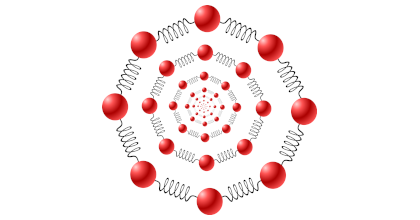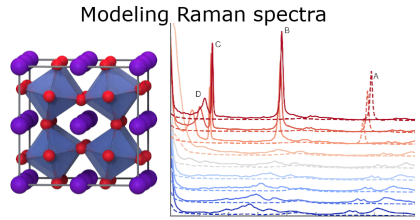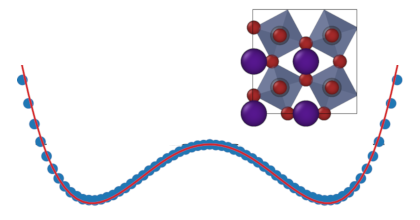Understanding correlations in BaZrO3: Structure and dynamics on the nano-scale
E. Fransson,
P. Rosander,
P. Erhart,
and
G. Wahnström
Chemistry of Materials 36, 514
(2024)
arXiv:2310.05565
doi: 10.1021/acs.chemmater.3c02548
zenodo: 8337181
(associated data)
Download PDF

Barium zirconate BaZrO3 is one of few perovskites that is claimed to retain an average cubic structure down to 0 K at ambient pressure, while being energetically very close to a tetragonal phase obtained by condensation of a soft phonon mode at the R-point. Previous studies suggest, however, that the local structure of BaZrO3 may change at low temperature forming nanodomains or a glass-like phase. Here, we investigate the global and local structure of BaZrO3 as a function of temperature and pressure via molecular dynamics simulations using a machine-learned potential with near density functional theory accuracy. We show that the softening of the octahedral tilt mode at the R-point gives rise to weak diffuse superlattice reflections at low temperatures and ambient pressure, which are also observed experimentally. However, we do not observe any static nanodomains but rather soft dynamic fluctuations of the ZrO6 octahedra with a correlation length of 2 to 3 nm over time-scales of about 1 ps. This soft dynamic behaviour is the precursor of a phase transition and explains the emergence of weak superlattice peaks in measurements. On the other hand, when increasing the pressure at 300 K we find a phase transition from the cubic to the tetragonal phase at around 16 GPa, also in agreement with experimental studies.



